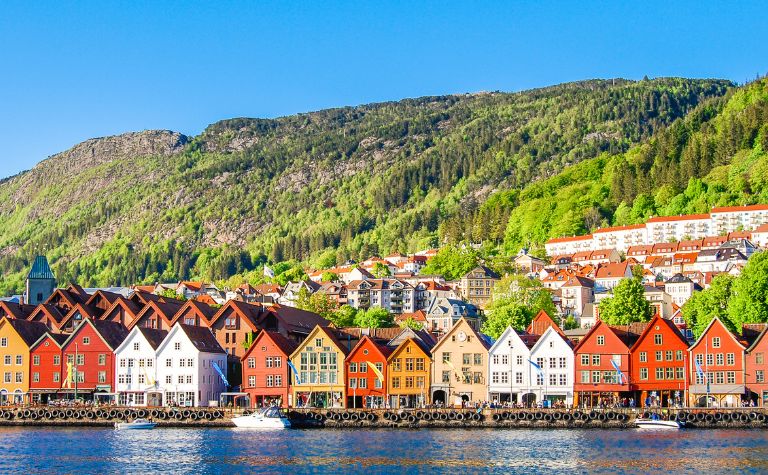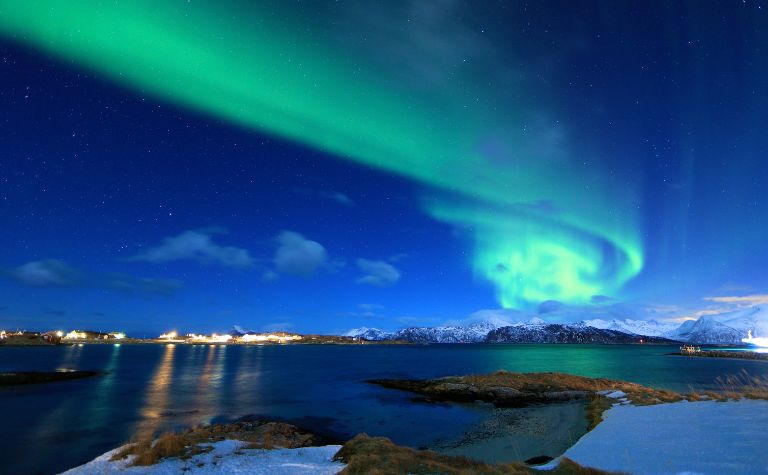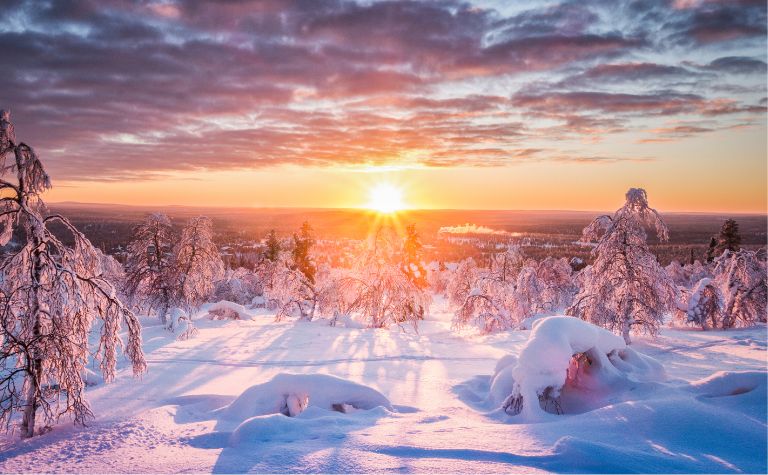One of the most iconic features of Scandinavia is the array of picturesque wooden houses painted in bright colors. These lovely buildings capture the eye of many tourists and admirers of Scandinavian culture.
Therefore, many people will naturally want to know why those houses are as colorful as they are.
Scandinavia’s colorful houses have historical significance. House color once signified social status. Red was the cheapest, so poor people used it, making it widespread.
Middle classes used ochre, and the rich used white. The hierarchy disappeared with time, but the tradition of colorful houses remains.
This article will examine the history and social significance of the unique color pallet of Scandinavian houses.
Also, see Why Do Scandinavians Have Small Noses? to learn more.

Why Are So Many Houses Red in Scandinavia?
Many Scandinavian houses are red because that color was the cheapest option throughout history. Common people, especially farmers, used it to paint their houses.
Wealthier people used other colors. Since most people weren’t wealthy, most houses were red.
The most accessible building material in Scandinavia is wood. Wood typically requires some type of finish so it doesn’t deteriorate quickly due to exposure to the elements.
This means that people had to paint their houses if they wanted them to last.
Until relatively recently in history, creating pigments was quite a difficult job, so they cost a ton of money. The cheapest pigment was red, as it was made from red earth.
This meant that red was the only option for farmers and other ordinary people if they wanted to paint their houses. [1]
The limited availability of colors even created a color-coded hierarchy.
Middle-class people often had yellow or ochre houses since that color was a bit more expensive, which signified a higher social standing.
The wealthiest people had white houses. White paint was very expensive to make since it required minerals such as zinc. [2]
Only the richest could afford it, and they used it to mimic the look of stone. Stone was rarely used and was only reserved for some public buildings or the houses of the wealthiest.
In the 19th century, various pigments became increasingly cheaper and more accessible.
Many people started painting their houses various colors simply because they could. This created areas with houses in vastly different colors.
Despite the greater availability of various pigments, red houses had become something of a tradition, and many people still chose to paint their houses red.
This became a quintessential image of Scandinavia and is still a popular choice, especially in the countryside.
This feature might be even more prominent in Norway. Red is their flag’s dominant color, and many patriotic symbols are also red.
The color is clearly connected to their national pride, so it makes sense they would paint their houses red.
Also, see How Are Scandinavians Viewed in Europe? to learn more.

Why Are Some Scandinavian Houses Yellow?
Scandinavian merchants, well-off craftsmen, and lower members of the bourgeoisie often painted their houses yellow to distinguish themselves from fishermen, farmers, and other commoners.
Over time, the color became one of the traditional colors for Scandinavian houses.
In the color hierarchy of Scandinavia, yellow was reserved for the middle layers of society.
It was more expensive to make than red, so it signified that a person who could afford to paint their house yellow was better off than someone with a red house. [3]
The yellow paint was made from copper, which is not as abundant as the materials used for making red paint, and the process was more labor-intensive.
Naturally, it was more expensive than red paint but not as expensive as white paint, so it was the perfect choice for someone in the middle of the hierarchy.
White houses allowed the richest to distinguish themselves from middle-class and lower-class people alike.
They were not very common due to the low availability, so owning a white house made one truly stand out from the crowd.
Because of this exclusivity, these houses were not very common, so the color never became traditional, like red or yellow.
Even today, houses built in the traditional style are very rarely white. Of course, they exist, but even in famous districts such as Bryggen, red and yellow dominate over white.
Nowadays, the color pallet is broader than before. It is not unusual to find blue, gray, or orange houses next to each other.
When they’re built next to each other, the colors create a real feast for the eyes and make the landscape look really charming.
Another reason for building such colorful houses, apart from history and tradition, might be precisely the aesthetics of it.
Scandinavia in winter can get quite dreary and borderline depressing, so having neighborhoods done up in a wide variety of colors adds a touch of life and happiness to the dreary Scandinavian winter.
The colors, particularly when combined with bright lights, also help one find their house in terrible winter conditions.
This is especially true in the countryside, where there might not be sufficient public lighting.
Also, see Why Are Scandinavians So Rich? to learn more.

Do Some Scandinavians Paint Their Houses Black?
Some Scandinavians paint their houses black because black absorbs light and helps insulate the house against really cold weather.
This can help quite a lot during long, cold Scandinavian winters.
Black houses might seem a bit morbid when compared to the wide array of colors one can find in Scandinavian neighborhoods.
However, they serve a practical purpose, and practicality is more important than aesthetics in harsh weather conditions.
Black absorbs light and, thus, provides more heat. For example, black clothes usually make people feel hotter than clothes of lighter colors.
Some Scandinavians like to mimic this with their houses and paint them black to achieve the same effect. [4]
While this might not change the situation drastically, it could help make the houses just a bit warmer and cozier.
Scandinavian immigrants brought the Scandinavian building style to the USA, particularly the Midwest, in the 19th century.
That’s why it’s common to see wooden houses and red barns in that area. It’s also possible to see a black Scandinavian-style house in the USA for the same reason. [5]
Conclusion
Scandinavian houses are colorful because people in the past painted their houses according to their social standing. The typical colors eventually became a tradition.
Also, see What Do Scandinavians Think of the Netherlands? to learn more.
References:
[1] Source
[2] Source
[3] Source
[4] Source
[5] Source
